Casting-Designer Cellular Automaton (CDCA)
Prediction of grain structure in casting solidification
The CDCA (Cast-Designer Cellular Automaton) model is a cellular automaton growth model combined with finite-difference solution of diffusion equations.
Porosity formation is classically divided in two stages: nucleation and growth. Both of them can be simulated with CDCA code.
Many physical phenomena that are occurring during solidification has been included in the CDCA model, such as:
- Pre-fixed nucleation of pores
- Stochastic nucleation
- Diffusion controlled growth
- Gas problems
- Couple the Marco model
CDCA MAIN FEATURES & APPLICATIONS
Cellular Automaton (CA) is an algorithm that describes the dynamic systems where space, time, and variables are discrete in all sites of a lattice and local; global deterministic or stochastic rules can be applied to each site.
A universe consisting of a homogeneous array of “cells” is assigned at the beginning of calculation. Each cell is endowed with a finite number of states and evolves in discrete time, according to a uniform local transition rule. The rule can be seen as a function whose arguments are the state at time t of neighboring cells and whose value is the state of the considered cell at time t+1.
At each time step, all the cells compute their new state and update the values according to the pre-defined transition rules.
By iterating this operation, the evolution of the variables associated with the cells is obtained and thus some physical events such as nucleation and growth of solid are simulated.
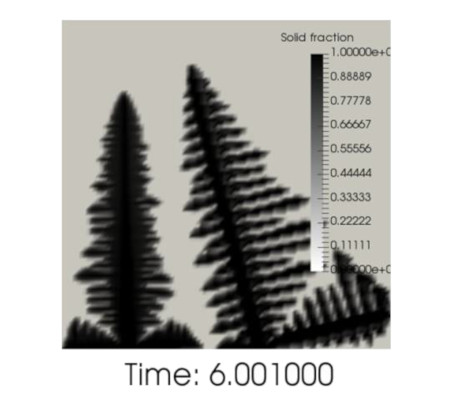
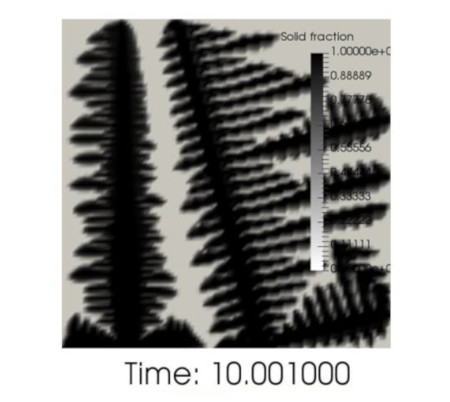
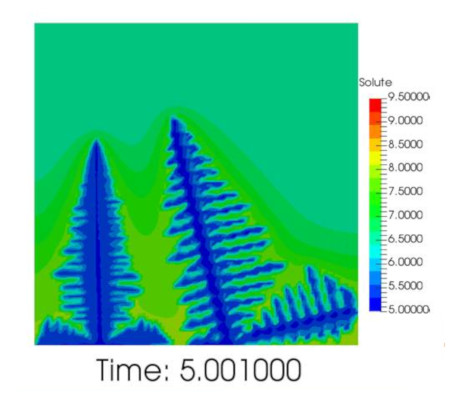
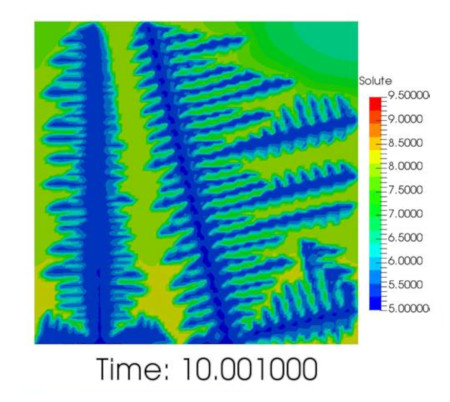
A wide range of axial orientations can be produced during the directional solidification of highly alloyed Ni-base superalloys depending on the efficiency of the competitive growth mechanism.
Gas Porosity Simulation
Many components experience cyclic loading, where casting defects such as micro-porosity, intermetallic particles and oxide films can be detrimental to the fatigue behavior.
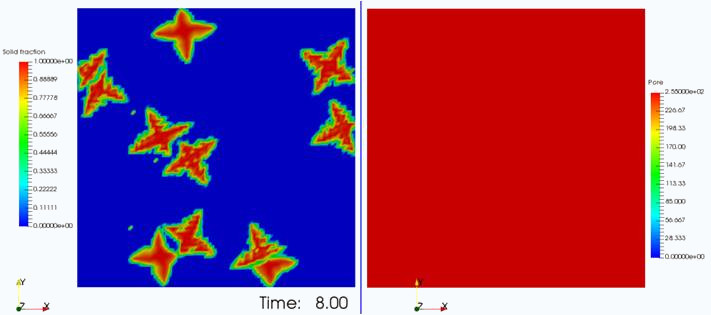
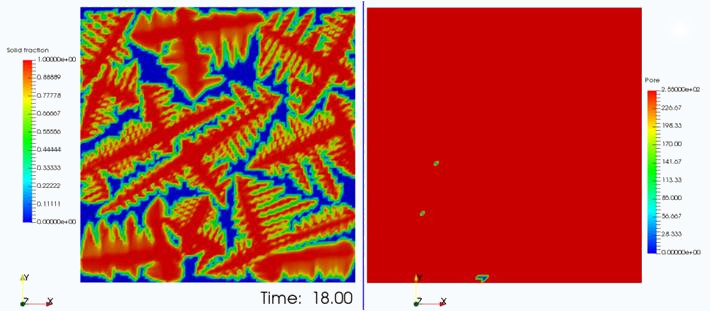
The CDCA model is able to predict the three dimensional morphology of porosity including shape, size, and distribution.
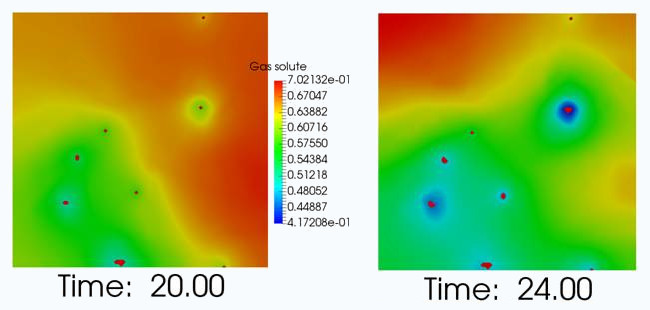
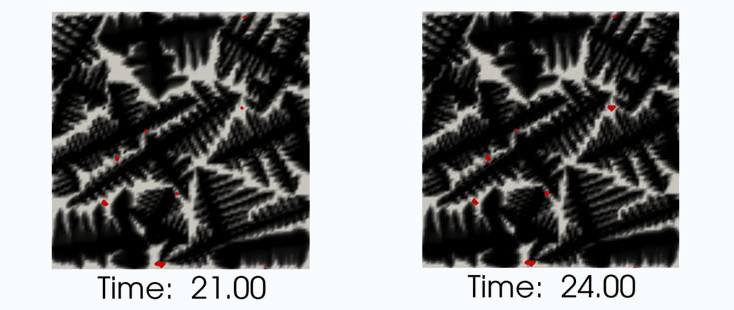
Growth of micro-porosity depends upon diffusion of hydrogen, shrinkage, and the interaction of the expanding pores with the surrounding dendrites. Therefore, the prediction of the morphology of porosity should consider the restriction of bubble growth by the solid phase.
CDCA Modeling
The theory of CDCA was very complex and with lots of parameters, especially for material data. To simplify the operation and easy to understand, it is designed as the template style.
The user is recommended to select the similar template to start the work and then make some modification based on the selected template.
Material data is the key of the microstructure simulation with very limited reference. The user is asked to do carefully studying on the CDCA material before the simulation.
All functions of CDCA were integrated to the unique interface, including the model coupling, so using the software module is quite easy.
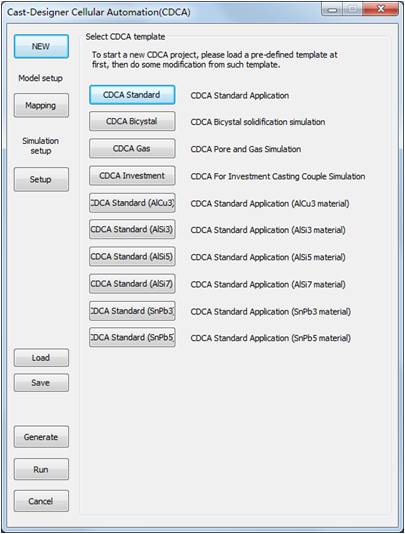
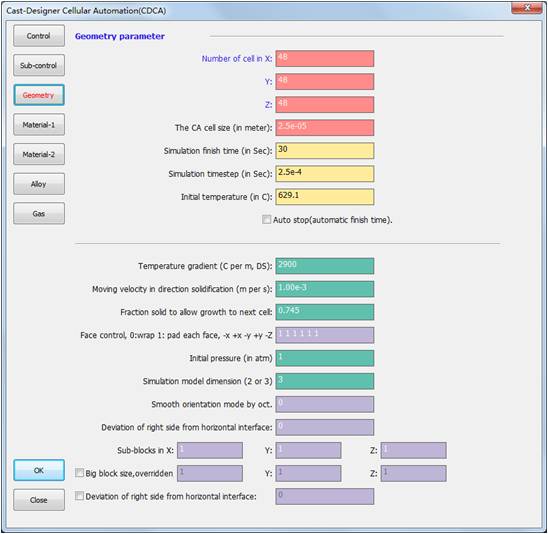
The CDCA software user's interface
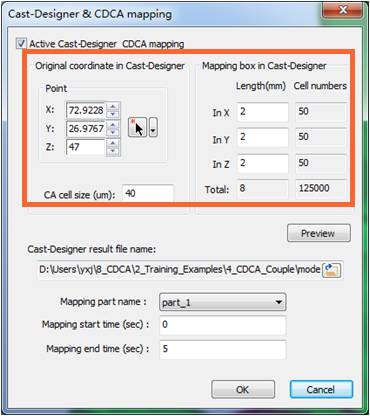
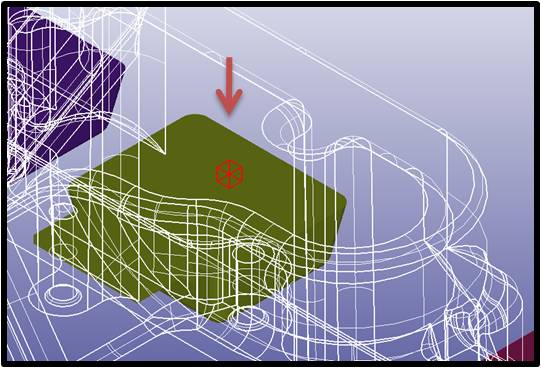
Define the CDCA coupling model: Pick up the time depended temperature data from the Marco model and assign to the CDCA simulation, so the affection of cooling rate to solidification could be considered well.
Couple to Marco Model
The reaction of the mould with liquid metal is sometimes unavoidable. Some alloys are very reactive, when casting these alloys, it is necessary to consider the layer of impure material that will form at the surface. The mould area needs to be specified by inputting an image, or by coupling with a Marco-Model that can pass this information to the simulation routine.
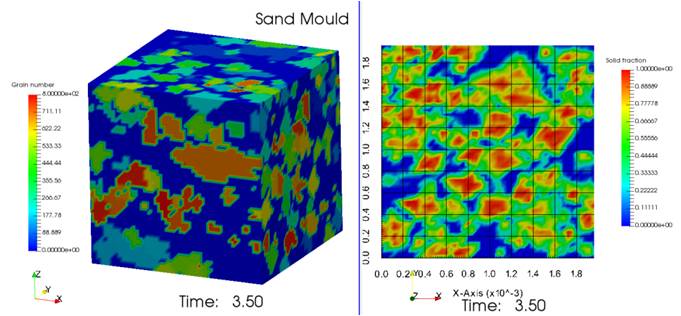
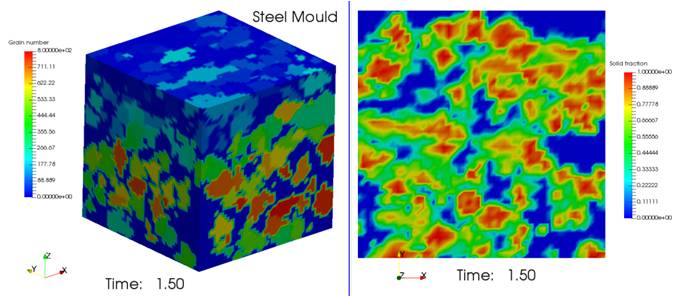
The comparison of 2 Marco coupled models in different cooling rate: The sand mould and the steel mould.
Run a standard Cast-Designer simulation for the Marco-model
- Usually solidification only simulation
- Consider complex temperature distribution
Check the Marco-model simulation result and run couple
- Temperature distribution
- Where is the key region need run CDCA
- Result output frequency in the key frame should be small enough
- Define the process start time and end-time
Start time: when to start CDCA couple (all liquid)
End time: when to stop CDCA couple (all solid)
Cast-Designer multi-scale solution
Multi-scale modeling and simulation have become major tools in the design, and optimization of novel materials and their processing. Casting micro structure, evolution is difficult to describe quantitatively by only a separate simulation of dendrite scale or grain scale.
Cast-Designer provides a whole solution with multi-scale coupling from µm to 100 meters in the same user's environment.
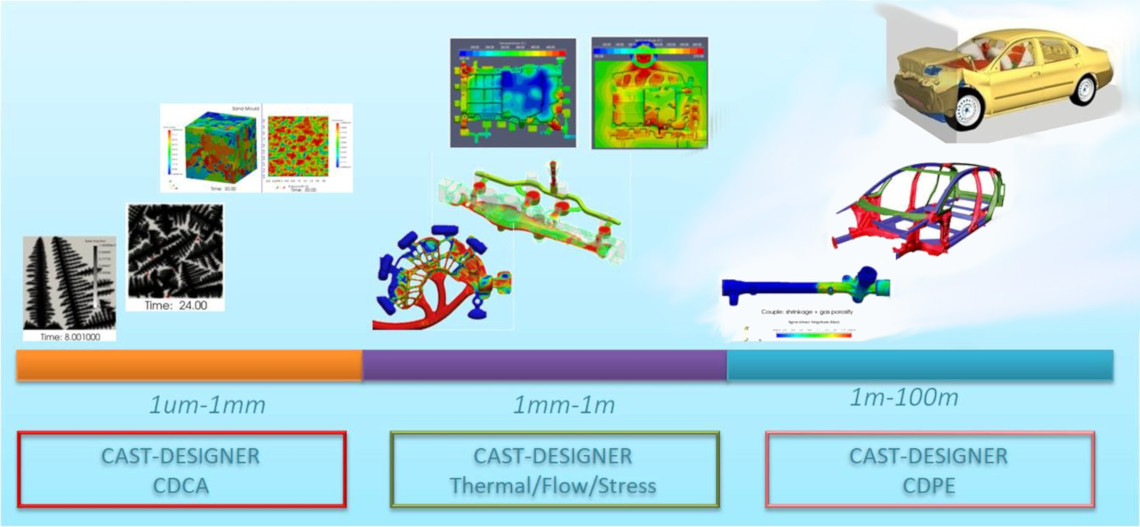
Full casting chain
